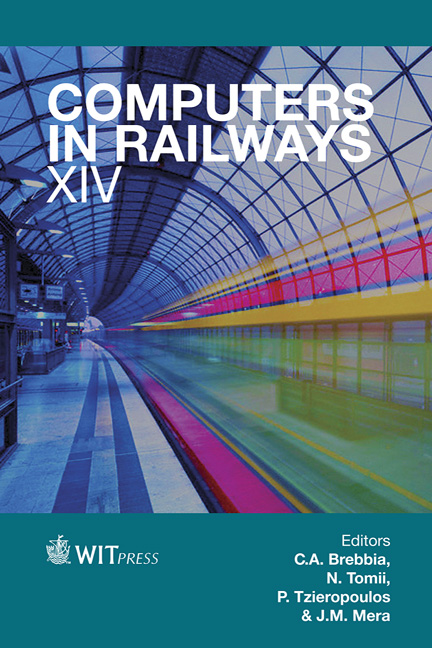Analysing The Business Case For Introducing A 3 KV Traction Power Supply In Dutch Railways
Price
Free (open access)
Transaction
Volume
135
Pages
11
Page Range
745 - 755
Published
2014
Size
1,378 kb
Paper DOI
10.2495/CR140621
Copyright
WIT Press
Author(s)
A. Zoeteman, F. ten Harve & T. Ploeg
Abstract
The Dutch railway system is equipped with a 1500 V DC system. In order to facilitate further growth, the 1500 V system has needed and will need significant investments in substations. In 2001 the railway sector analysed the system and decided to continue with the system until at least 2017 and to re-evaluate the system performance again a decade later. 25 kV AC was considered the best option but difficult to realised in a \“brownfield situation” on existing tracks. ProRail started a quick-scan study in 2011 and 2012 in which the actual existing options for power supply as described in European standards (TSI Energy) were put to the test. It led to new insights, which were not available back in 2001, and related to updated traffic development insights and a new possibility and importance of sustainable power consumption. A migration path to an alternative traction system was subsequently elaborated in 2013, the so-called 3 kV DC alternative, which was developed jointly with a societal business case. It was found that the current 1500 V DC system can still be improved in terms of efficiency but that a 3 kV alternative can achieve a step change in energy savings as well as travel time savings. The draft business case and migration plan will be the start for discussions with the operators and development of a joint business case and recommendation of the railway sector. The process has not been finished but key results from the analysis and lessons learned from this process will be discussed in this paper. Keywords: railway traction, energy savings, travel time savings, sustainability.
Keywords
railway traction, energy savings, travel time savings, sustainability.





